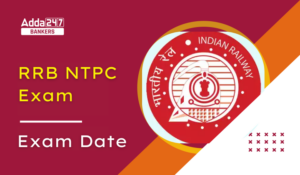Quantitative Aptitude Quiz For SBI PO/Clerk Prelims
Numerical Ability or Quantitative Aptitude Section has given heebie-jeebies to the aspirants when they appear for a banking examination. As the level of every other section is only getting complex and convoluted, there is no doubt that this section, too, makes your blood run cold. The questions asked in this section are calculative and very time-consuming. But once dealt with proper strategy, speed, and accuracy, this section can get you the maximum marks in the examination. Following is the Quantitative Aptitude quiz to help you practice with the best of latest pattern questions.
Q1. Three numbers which are co-prime to each other are such that the product of the first two is 143 and that of the last two is 187. The sum of the three numbers is:
Also, the given two products have the middle number in common
So, middle number
⇒ H.C.F. of 143 and 187 = 11
⇒ First number = 143 /11= 13
⇒ Third number = 187 /11= 17
⇒ Required sum = (11 + 13 + 17) = 41
∴ Sum of the three numbers is 41
Q2. What is the value of 2 consecutive natural numbers, sum of whose squares is 145?
⇒ n² + (n + 1)² = 145
⇒ 2n² + 1 + 2n = 145
⇒ 2n² + 2n - 144 = 0
⇒ n² + n - 72 = 0
By middle term splitting, we get,
⇒ n² + 9n - 8n - 72 = 0
⇒ n(n + 9) - 8(n + 9) = 0
⇒ (n - 8)(n + 9) = 0
⇒ n = 8, -9
n can’t take negative values, as it is a natural number.
⇒ n = 8
⇒ n + 1 = 9
∴ Two numbers are 8 and 9
Q4. A number when divided by 6 leaves remainder 3. When the square of the same number is divided by 6, the remainder is
x = 6y + 3
x² = (6y + 3)²
x² = 36y² + 36y + 9
x² = 6 × (6y² + 6y + 1) + 3
∴ When the square of the same number is divided by 6, the remainder will be 3.
Q5. At a telephone exchange, three phones ring at intervals of 20 sec, 24 sec and 30 seconds - If they ring together at 11:25 am, when will they next ring together?
⇒ Time taken by three phones to ring together = 120 seconds
(∵ 1 min = 60 seconds)
⇒ Time taken by three phones to ring together = 120/60 = 2 min
If the three phones ring together at 11:25 am then they will next ring together after 2 minutes i.e. at 11:27 am.
∴ Time at which the phones next ring together = 11:27 am
Q6. The ages of Raghav and Priti are 40 years and 60 years, respectively. How many years before the ratio of their ages was 3 : 5?
Q7. Eighteen years ago, a father was three times as old as his son. Now the father is only twice as old as his son. Then the sum of the present ages of the son and the father is:
∴ Present age of father = 2x years
ATQ,
2x – 18 = 3 (x – 18)
⇒ x = 36 years = son’s age
∴ Father’s present age = 72 years
∴ Required sum = 72 + 36 = 108 years
Q8. Sushil got married 6 years ago. His age is 7/6 times of his age at the time of his marriage. Three years ago, his son was 3 years old. The ratio of their (Sushil’s son & Sushil) present age is:
Q9. 1 year ago, a mother was 4 times older to her son. After 6 years, her age becomes more than double her son’s age by 5 years. The ratio of present age of mother to the present age of son will be:
Then, x - 1 = 4(y - 1)
⇒ x = 4y – 3 ...(i)
And, x + 6 = 2 (y + 6) + 5 ...(ii)
⇒ 4y – 3 + 6 = 2y + 12 + 5
⇒ 4y + 3 = 2y + 17
⇒ y = 14/2 = 7 years
And, x = 25 years
And, Required ratio = 25: 7
Q10. The sum of present age of P and Q is 54 years. After 4 years, ratio of their ages will be 2 : 3. Find the present age of P.
Q11. The ratio between age of Harish and his elder brother is 2: 5. After 4 years the ratio between their ages will be 1: 2. Find the difference between their present ages.
Q12. The average score of Ajhar in five innings are in arithmetic progression. If his score in first inning is 48 and in last inning is 80 then total runs scored by him in all the innings together is:
Q13. Average score of Rishabh in five different tests is 42.5. Later it was seen that the two scores were written incorrectly as 44 in place 42 and 36 in place of 40. Find the correct average.
Q14. The ratio between perimeter of an equilateral triangle and a square is 3 : 8. The area of square is 800% of area of a rectangle having sides 8 m and 4 m. Find the perimeter of equilateral triangle.
Q15. What is the probability of selecting 5 persons out of 4 females and 5 males such that there is at least 2 females?





 GA Capsule for SBI Clerk Mains 2025, Dow...
GA Capsule for SBI Clerk Mains 2025, Dow...
 The Hindu Review October 2022: Download ...
The Hindu Review October 2022: Download ...
 RRB NTPC Exam Date 2025 Soon, Check Expe...
RRB NTPC Exam Date 2025 Soon, Check Expe...





